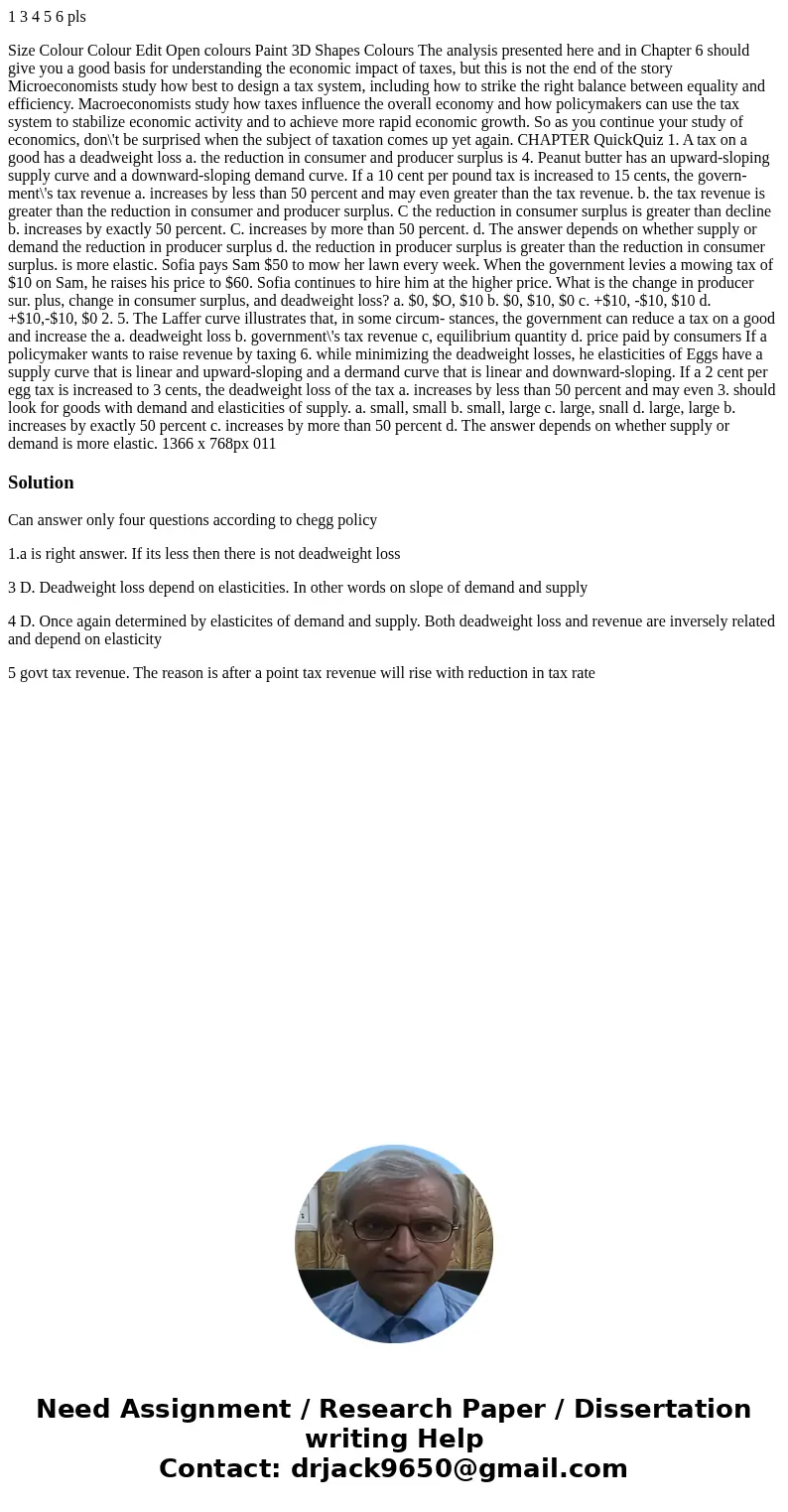1 3 4 5 6 pls Size Colour Colour Edit Open colours Paint 3D
1 3 4 5 6 pls
Size Colour Colour Edit Open colours Paint 3D Shapes Colours The analysis presented here and in Chapter 6 should give you a good basis for understanding the economic impact of taxes, but this is not the end of the story Microeconomists study how best to design a tax system, including how to strike the right balance between equality and efficiency. Macroeconomists study how taxes influence the overall economy and how policymakers can use the tax system to stabilize economic activity and to achieve more rapid economic growth. So as you continue your study of economics, don\'t be surprised when the subject of taxation comes up yet again. CHAPTER QuickQuiz 1. A tax on a good has a deadweight loss a. the reduction in consumer and producer surplus is 4. Peanut butter has an upward-sloping supply curve and a downward-sloping demand curve. If a 10 cent per pound tax is increased to 15 cents, the govern- ment\'s tax revenue a. increases by less than 50 percent and may even greater than the tax revenue. b. the tax revenue is greater than the reduction in consumer and producer surplus. C the reduction in consumer surplus is greater than decline b. increases by exactly 50 percent. C. increases by more than 50 percent. d. The answer depends on whether supply or demand the reduction in producer surplus d. the reduction in producer surplus is greater than the reduction in consumer surplus. is more elastic. Sofia pays Sam $50 to mow her lawn every week. When the government levies a mowing tax of $10 on Sam, he raises his price to $60. Sofia continues to hire him at the higher price. What is the change in producer sur. plus, change in consumer surplus, and deadweight loss? a. $0, $O, $10 b. $0, $10, $0 c. +$10, -$10, $10 d. +$10,-$10, $0 2. 5. The Laffer curve illustrates that, in some circum- stances, the government can reduce a tax on a good and increase the a. deadweight loss b. government\'s tax revenue c, equilibrium quantity d. price paid by consumers If a policymaker wants to raise revenue by taxing 6. while minimizing the deadweight losses, he elasticities of Eggs have a supply curve that is linear and upward-sloping and a dermand curve that is linear and downward-sloping. If a 2 cent per egg tax is increased to 3 cents, the deadweight loss of the tax a. increases by less than 50 percent and may even 3. should look for goods with demand and elasticities of supply. a. small, small b. small, large c. large, snall d. large, large b. increases by exactly 50 percent c. increases by more than 50 percent d. The answer depends on whether supply or demand is more elastic. 1366 x 768px 011Solution
Can answer only four questions according to chegg policy
1.a is right answer. If its less then there is not deadweight loss
3 D. Deadweight loss depend on elasticities. In other words on slope of demand and supply
4 D. Once again determined by elasticites of demand and supply. Both deadweight loss and revenue are inversely related and depend on elasticity
5 govt tax revenue. The reason is after a point tax revenue will rise with reduction in tax rate

 Homework Sourse
Homework Sourse